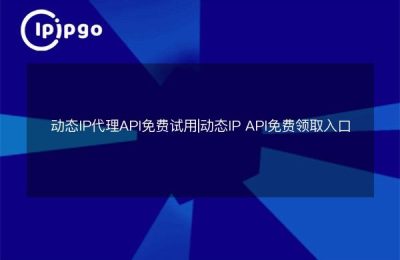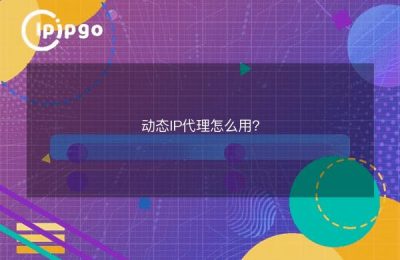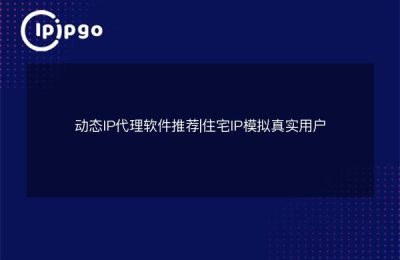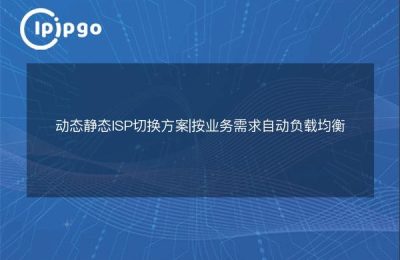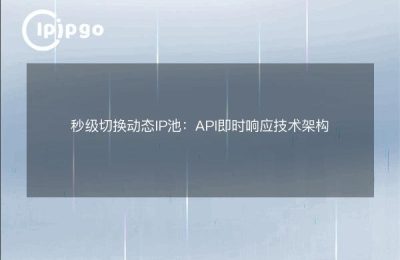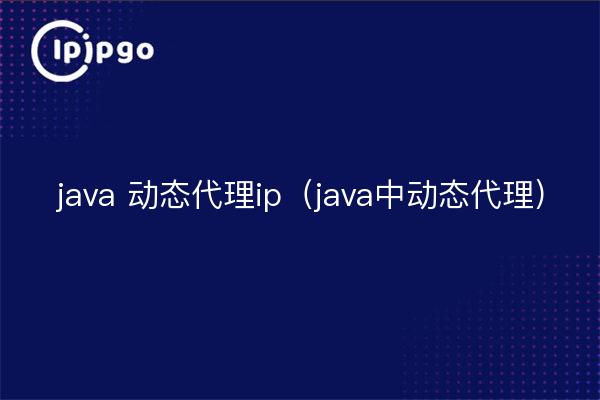
Very often, we will encounter some situations that require dynamic proxy IP when writing Java programs. At this point, you need to use the dynamic proxy technology in Java. As if you are sailing in the sea, you need to constantly adjust the course to avoid the same reef, dynamic proxy is like for you to automatically adjust the course, so you can sail smoothly.
java dynamic proxy ip
Dynamic proxies, as if you have an advocate , can replace you to deal with some tedious matters , so that you can be more focused on their own things . It can add some additional operations to our objects without changing the original code, such as doing some logging, performance statistics, security control before and after the call to the method.
In Java, dynamic proxies are usually implemented using the `java.lang.reflect.Proxy` class, in conjunction with the `java.lang.reflect.InvocationHandler` interface. Let's look at a simple example:
"`java
import java.lang.reflect.Proxy;
import java.lang.reflect.InvocationHandler;
import java.lang.reflect.
// Define an interface
interface Hello {
void sayHello();
}
// Classes that implement this interface
class HelloImpl implements Hello {
@Override
public void sayHello() {
System.out.println("Hello, world!");
}
}
// Define a processor for dynamic agents
class MyInvocationHandler implements InvocationHandler {
private Object target.
public MyInvocationHandler(Object target) {
this.target = target;
}
@Override
public Object invoke(Object proxy, Method method, Object[] args) throws Throwable {
System.out.println("Before");
Object result = method.invoke(target, args);
System.out.println("After");
return result;
}
}
public class Main {
public static void main(String[] args) {
Hello hello = new HelloImpl();
Hello proxyHello = (Hello) Proxy.newProxyInstance(
hello.getClass().getClassLoader(),
hello.getClass().getInterfaces(),
new MyInvocationHandler(hello)
);
proxyHello.sayHello();
}
}
“`
In this example, we define a `Hello` interface and a `HelloImpl` implementation class. Then, we define a `MyInvocationHandler` class that implements the `InvocationHandler` interface to handle the dynamic proxy logic. In the `Main` class, we created the proxy object for the `Hello` interface using the `Proxy.newProxyInstance` method, and then calling the proxy object's `sayHello` method triggered the logic in `MyInvocationHandler`.
This allows us to add additional operations to the `sayHello` method of the `HelloImpl` class without changing the original code.
Dynamic proxies in java
Dynamic Proxy IP, just like changing an ID card for your spokesperson, can make him speak on your behalf in different places. In practice, dynamic proxy IP can be used to realize some network access in the IP switching, hide the real IP and other needs. For example, you need to constantly switch IP to avoid being blocked when crawling website data, which can be realized by using dynamic proxy IP.
In Java, we can take advantage of third-party libraries such as Apache HttpClient, combined with the API provided by the dynamic proxy IP service provider, to realize the function of dynamic proxy IP. The following is a simple example:
"`java
import org.apache.http.
import org.apache.http.client.config.RequestConfig;
import org.apache.http.impl.client.CloseableHttpClient;
import org.apache.http.impl.client.HttpClients;
import org.apache.http.client.methods.HttpGet;
import org.apache.http.client.methods.CloseableHttpResponse;
import org.apache.http.util.EntityUtils;
public class Main {
public static void main(String[] args) throws Exception {
// Create the HttpClient object
CloseableHttpClient httpClient = HttpClients.createDefault();
// Set the proxy IP
HttpHost proxy = new HttpHost("your_proxy_ip", your_proxy_port);
RequestConfig config = RequestConfig.custom()
.setProxy(proxy)
.build();
// Create the HttpGet object
HttpGet httpGet = new HttpGet("http://www.example.com");
httpGet.setConfig(config);
// Initiate the request
CloseableHttpResponse response = httpClient.execute(httpGet);
// Process the response
String result = EntityUtils.toString(response.getEntity());
System.out.println(result);
// Close the resource
response.close();
httpClient.close();
}
}
“`
In this example, we use Apache HttpClient to send GET requests, and by setting the proxy IP and port, we realize the function of dynamic proxy IP. In this way, we can realize the need to freely switch IPs in network access.
In summary, dynamic proxy technology in Java has a wide range of application scenarios, whether in the daily business logic processing, or in network access, can play an important role. We hope that through the introduction of this article, we can let readers have a more in-depth understanding of dynamic proxies and be able to flexibly use them in real projects.

